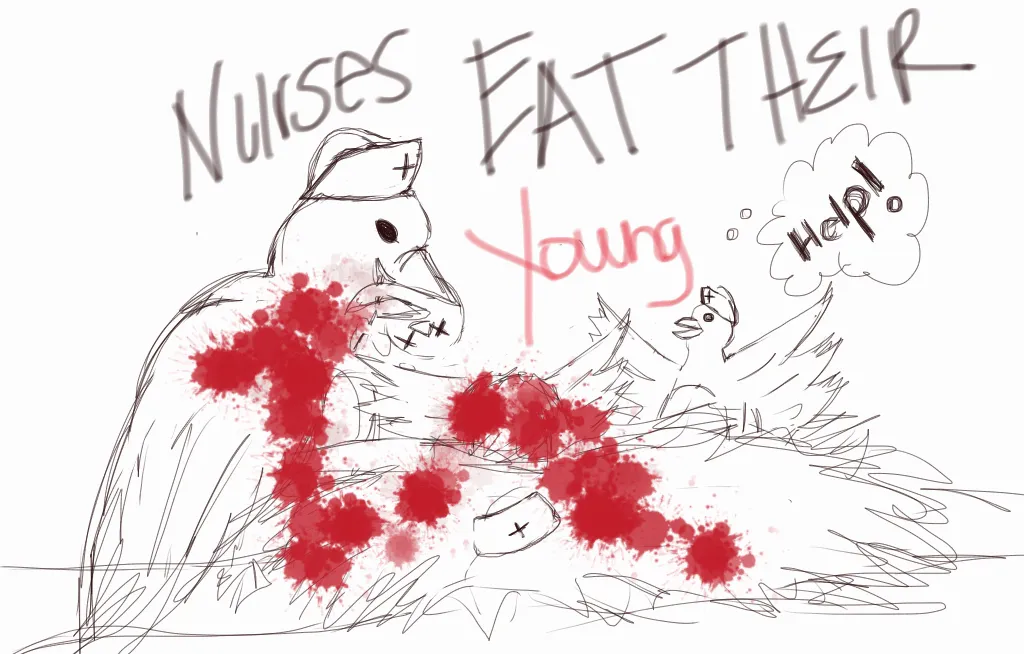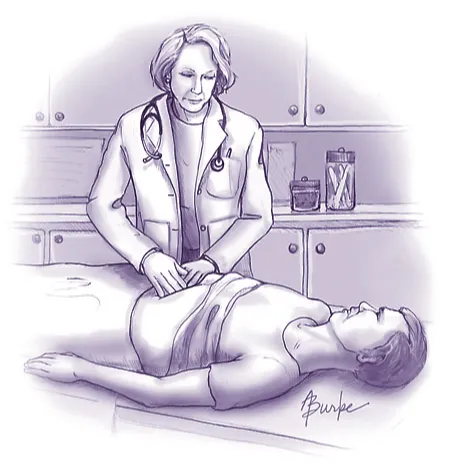Therapy Journal of Nursing

A Nursing Intervention to Enhance Wellness and Patient Adherence to Therapy for Headache - NEWPATH Study
Tags: Chronic Disease Self-Management headache Migraine Nursing Initiative patient adherence study therapy treatment wellness
The objective of the study is to ascertain whether the implementation of a nurse-initiated phone call between initial and follow up Headache appointments has the potential to enhance wellness and treatment plan adherence by reducing common barriers experienced by patients with Headache.
Read More →
RN's informed about skills of Occupational Therapist & Physical Therapists
Tags: occupational Occupational Therapist physical Physical Therapist therapist therapy
Registered Nurses do not differentiate between the applied skills of the Occupational Therapist and Physical Therapist, nor do Registered Nurses realize it is the Occupational Therapist who is responsible for prescribing patients with developmental disabilities the type and configuration of an appropriate wheelchair.
Read More →
Therapeutic Hypothermia Management
Tags: cardiac cerebral ischemia critical care hemorrhage Hypothermia perioperative recommendations Subarachnoid Hemorrhage Therapeutic Hypothermia therapy traumatic brain injury treatment
The leading cause of death in North America is heart disease, resulting in 611,105 deaths in the last year. Cardiac arrest accounts for more than 300,000 heart disease related deaths. Patients that receive early quality chest compressions and defibrillation present with increased survival rate, however, the degree of brain dysfunction varies. The advancement in cardiopulmonary resuscitation after cardiac arrest and the use of therapeutic hypothermia have minimized brain injury and improved neurologic outcome. In 2002, two studies demonstrated the use of therapeutic hypothermia after cardiac arrest proving to lower mortality rate and have neuroprotective effect. This led the American Heart Association and the International Liaison Committee on Resuscitation to recommend the implementation of therapeutic hypothermia after the return of spontaneous circulation post-cardiac arrest. Mild hypothermia is also utilized in traumatic brain injury to control cerebral edema and to decrease intracranial pressure (ICP), cerebral ischemia, and subarachnoid hemorrhage (SAH). However, clinical effectiveness for subarachnoid hemorrhage is still questionable. This paper will focus on the recommendations for therapeutic hypothermia after cardiac arrest as well as a briefly discuss its use for clinical trials in traumatic brain injury, cerebral ischemia, and SAH.
Read More →
Barriers to Patients Undergoing Methadone Maintenance Therapy
Tags: addiction mental health methadone opiates therapy treatment treatment options
Methadone maintenance therapy is one method utilized to combat opioid addiction and is an effective treatment in the abstinence from opiates. The purpose of this article is to communicate comprehensive information to healthcare providers about methadone as a medication, and the treatment guidelines of maintenance programs in the hopes of diminishing the stigma attached to methadone maintenance therapy. Through a comprehensive literature review, information regarding mechanism of action, maintenance therapy program guidelines, different barriers to treatment, and how to overcome these barriers were collected and reviewed.
Read More →
Going Against the Norm: Treating Cancer as a Metabolic Disease
Tags: aging cancer cancer patients cancer risk chemotherapy metabolic metabolic disease oncology preventing cancer therapy treatment treatment options
The current treatment for someone diagnosed with cancer is no longer acceptable. The focus needs to shift away from our standard treatments which so often causes pain as well as physical and emotional suffering. Emerging research about the body’s cellular metabolism provides new hope for cancer prevention and treatment. A number of mechanisms present in the human body are known to inhibit cancer cell growth by providing the body with an alternative fuel source, one that cancer cells cannot metabolize. For instance, induced ketosis offers a physiological means of regulating glucose metabolism in cancer patients while suppressing tumor metabolism and progression while ketone production significantly produces anti-cancer effects by shifting the body’s fuel source from a glucose dependency to one that is ketone based. Even while there remains controversy over the occurrence of many types of cancer, recent research has unveiled promising results towards cancer prevention and treatment. Emerging evidence indicates cancer is primarily a metabolic disease. According to Dana-Farber Cancer Institute (2014) research is being done to look at the connection between body weight, sugar intake, insulin levels and their correlation to cancer. Understanding the cellular metabolism of cancer is necessary in order to find preventative and holistic treatment modalities and for this to occur, a paradoxical shift in our current perception of cancer treatment is necessary.
Read More →
Cortical Dynamics as a Therapeutic Mechanism for Touch Healing
Tags: behavior stress therapy Touch Healing
Touch Healing (TH) therapies, defined here as treatments whose primary route of administration is tactile contact and/or active guiding of somatic attention, are ubiquitous across cultures. Despite increasing integration of TH into mainstream medicine through therapies such as Reiki, Therapeutic Touch,™ and somatically focused meditation practices such as Mindfulness-Based Stress Reduction, relatively little is known about potential underlying mechanisms. Here, we present a neuroscientific explanation for the prevalence and effectiveness of TH therapies for relieving chronic pain. We begin with a cross-cultural review of several different types of TH treatments and identify common characteristics, including: light tactile contact and/or a somatosensory attention directed toward the body, a behaviorally relevant context, a relaxed context and repeated treatment sessions. These cardinal features are also key elements of established mechanisms of neural plasticity in somatosensory cortical maps, suggesting that sensory reorganization is a mechanism for the healing observed. Consideration of the potential health benefits of meditation practice specifically suggests that these practices provide training in the regulation of neural and perceptual dynamics that provide ongoing resistance to the development of maladaptive somatic representations. This model provides several direct predictions for investigating ways that TH may induce cortical plasticity and dynamics in pain remediation.
Read More →
Poor sleep, hazardous breathing: An overview of obstructive sleep apnea
Tags: cessation Hallucinations obstructive sleep apnea sleep apnea sleep-disordered breathing therapy treatment treatment options
Obstructive sleep apnea is a chronic disorder resulting from upper airway collapse during sleep. It is linked to a variety of health and safety risks but can often be effectively treated. This article provides an overview of the disorder, including an evidence-based approach to diagnosis and management.
Read More →
Effects of Music Therapy in Pediatric Mental Health
Tags: adolescents effects mental health music therapy pediatric pediatric mental health pediatrics therapy
Whether it is the simple melody of a lullaby to the crashing drums of rock and roll, music evokes an emotion in all of its listeners. Music has been around for centuries creating an environment of healing. When working with pediatric mental health patients, pharmacological interventions are often the solution to manage symptoms and negative feelings.
Read More →
Distress and Depression Among Bone and Marrow Transplant Patients
Tags: BMT cancer patients chemotherapy depression distress patient care stress therapy treatment
Bone and Marrow Transplant (BMT) is a five step treatment process: screening, collecting, conditioning, infusion, and engraftment. Bone and marrow transplant treatment is very aggressive that creates significant physical, social, psychological, and emotional stress. During the treatment process, many BMT recipients experience and display a wide array of psychosocial disorders including distress, anxiety, and depression. The way an individual experiences and copes with the distress, anxiety, and depression contributes to the physiological, psychological, and psychosocial outcomes of BMT treatment.
Read More →
Lung Cancer: A Case Study
Tags: cancer chemotherapy death end of life therapy treatment
Lung cancer is the number one cause of cancer-related death in men and the second most common in women. Lung cancer is responsible for 1.3 million deaths worldwide annually.
Read More →Get Published for Free
Browse by Tag
advocate aging anesthesia behavior cardiac care Case Study child children clinical compassion COVID-19 critical care death diabetes disease education emergency department end of life ethical principles ethical values ethics future of nursing health health care ICU medication mental health nurse Nurse Education nursing nursing education nursing ethics nursing faculty nursing school nursing students PACU patient care patient outcomes patient safety pediatric poem profession risk factors stress student nurse students teaching therapy treatment
Most Popular Last Month
More from RN Journal
Insuring the Uninsured: Hispanic Communities
Embracing the Climb: From Cleaning Floors to a DNP
More Than Evidence: How Experience and Reflection Shape My Epistemological Stance in Nursing
The Challenge of MSA: Multiple System Atrophy
Enuresis
Provision of Effective Patient Education: A Learning Clinical Experience
Navigating Autoimmune Diseases: A Nurse's Personal and Professional Journey
Everything you need to know about Chronic Fatigue Syndrome
Euthanasia, Assisted Suicide, and Nursing









